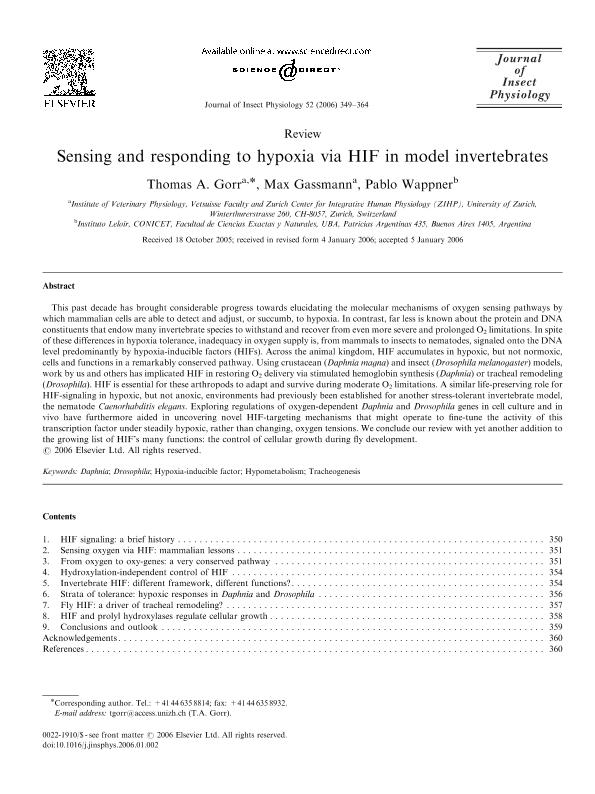Artículo
Sensing and responding to hypoxia via HIF in model invertebrates
Fecha de publicación:
04/2006
Editorial:
Pergamon-Elsevier Science Ltd
Revista:
Journal of Insect Physiology
ISSN:
0022-1910
e-ISSN:
1879-1611
Idioma:
Inglés
Tipo de recurso:
Artículo publicado
Clasificación temática:
Resumen
This past decade has brought considerable progress towards elucidating the molecular mechanisms of oxygen sensing pathways by which mammalian cells are able to detect and adjust, or succumb, to hypoxia. In contrast, far less is known about the protein and DNA constituents that endow many invertebrate species to withstand and recover from even more severe and prolonged O2 limitations. In spite of these differences in hypoxia tolerance, inadequacy in oxygen supply is, from mammals to insects to nematodes, signaled onto the DNA level predominantly by hypoxia-inducible factors (HIFs). Across the animal kingdom, HIF accumulates in hypoxic, but not normoxic, cells and functions in a remarkably conserved pathway. Using crustacean (Daphnia magna) and insect (Drosophila melanogaster) models, work by us and others has implicated HIF in restoring O2 delivery via stimulated hemoglobin synthesis (Daphnia) or tracheal remodeling (Drosophila). HIF is essential for these arthropods to adapt and survive during moderate O2 limitations. A similar life-preserving role for HIF-signaling in hypoxic, but not anoxic, environments had previously been established for another stress-tolerant invertebrate model, the nematode Caenorhabditis elegans. Exploring regulations of oxygen-dependent Daphnia and Drosophila genes in cell culture and in vivo have furthermore aided in uncovering novel HIF-targeting mechanisms that might operate to fine-tune the activity of this transcription factor under steadily hypoxic, rather than changing, oxygen tensions. We conclude our review with yet another addition to the growing list of HIF's many functions: the control of cellular growth during fly development. © 2006 Elsevier Ltd. All rights reserved.
Palabras clave:
Daphnia
,
Drosophila
,
Hypometabolism
,
Hypoxia-Inducible Factor
,
Tracheogenesis
Archivos asociados
Licencia
Identificadores
Colecciones
Articulos(IIBBA)
Articulos de INST.DE INVEST.BIOQUIMICAS DE BS.AS(I)
Articulos de INST.DE INVEST.BIOQUIMICAS DE BS.AS(I)
Citación
Gorr, Thomas A.; Gassmann, Max; Wappner, Pablo; Sensing and responding to hypoxia via HIF in model invertebrates; Pergamon-Elsevier Science Ltd; Journal of Insect Physiology; 52; 4; 4-2006; 349-364
Compartir
Altmétricas




